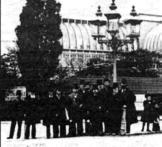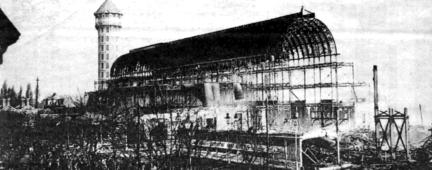Crystal Palace a Victorian Past
Visitors to Crystal Palace Park this weekend could be forgiven for thinking they have stepped back in time when faced with coconut shies, morris dancers and a century old brass band.
The Crystal Palace Foundation is hoping to transport visitors back to the Victorian and Edwardian eras to mark the 150th anniversary of the famous palace and to boost the profile of the South London park.
A Victorian and Edwardian funfair, a helter skelter, guided walks, archers, the Smithfield pearly king and queen, as well as a craft fair and dozens of stalls are just a few of the attractions that will attempt to recreate the heyday of the Crystal Palace.
The anniversary celebrations will be centred on the Italian Terrace in Crystal Palace Park between 11am and 5pm on Saturday 5th June and Sunday 6th June.

Organiser Melvyn Harrison, chairman of the Crystal Palace Foundation, said: "The Crystal Palace was not only stunning, but huge more than five football pitches in length.
"It was, quite simply, a breathtaking landmark and, along with the park, used to bring in 2 million visitors a year from when it opened in June 1854.
"Sadly, the palace was destroyed by fire in November 1936 but it lives on in the memory of local people and through the work of the Crystal Palace Foundation. I hope this weekend's celebrations will be a fitting tribute to a remarkable building,"
The glass and iron structure, dubbed the Crystal Palace by Punch magazine, was originally constructed in Hyde Park to house the Great Exhibition of 1851.

Image: The day after it was destroyed by fire, taken 1st December 1936.
When it was dismantled and rebuilt at Sydenham in 1864, designer Joseph Paxton enlarged it to more than double its original size, a five storey building housing a theatre, an aquarium and a grand orchestra.
It became the hub of London's musical scene and boasted a famous series of fireworks displays.
But on 30th November 1936 a massive fire engulfed and destroyed the Crystal Palace with nearly 90 fire engines and more than 380 fire fighters battling 300 foot flames. It was gone forever.
The two water towers which had survived were demolished in 1941 to stop Germans using them as landmarks during Second World War bombings.
And in 1964 the National Sports Centre was opened in the grounds and recently the site's famous Victorian dinosaur park, which predates Charles Darwin's Origin of the Species by six years, was painstakingly restored to its former glory.
The 150th anniversary comes as plans are being mooted on how to best use the site along with an extensive, multi-million pound revamp of the whole park.
